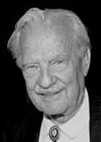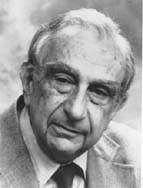 Monte
Carlo Landmark Papers
Monte
Carlo Landmark Papers
Note on
census-taking in Monte Carlo calculations
E. Fermi and R.D. Richtmyer 1948
A declassified report by Enrico Fermi. From the Los Alamos Archive.
The Monte Carlo Method
N. Metropolis and S. Ulam 1949
Journal of the American Statistical Association, 44, 335 (1949)
The paper by Nick Metropolis and Steve Ulam that started the whole
businnes.
Fermi's famous suggestion of the algorithm that would have become
Quantum Monte Carlo is there.
Equation of State Calculations by Fast Computing Machines
N. Metropolis, A.W.Rosenbluth, M.N.Rosenbluth, A.H.Teller and E. Teller
1953
The Journal of Chemical Physics, 21, 1087 (1953)
THE paper. Probably
THE
most important algorithm of the 20th century, often called the M(RT)2
algorith from the names of the authors.
Further Results on Monte Carlo Equations of
States
Marshall N. Rosenbluth and Arianna W. Rosenbluth 1954
The Journal of Chemical Physics, 22, 881 (1954)
This is a follow-up of the M(RT)2 paper. Rarely cited
An Interview vith Bernie Alder
Bernie Alder 1997, from
NERSC , part of the Stories of the Development of Large Scale
Scientific Computing at Lawrence Livermore National Laboratory
series.
It is little known that THE algorithm was
independently discovered by Bernie Alder, Stan Frankel and Victor
Lewinson. Quoting Alder:
..we started out with a configuration, a solid like order
configuration, and then jiggled the particles according to the pulse rate
distribution. And that is, in fact, known now as the Monte Carlo
Method—it was presumably independently developed at Los Alamos by Teller,
Metropolis, and Rosenbluth. They actually got all the credit. My guess is
we did it first at Cal Tech. It's not that difficult to come up with that
algorithm, which, by the way, I think is one of, if not THE, most
powerful algorithms
Actually, In a footnote of the original paper by Metropolis et al. they
credited Alder, Frankel and Lewinson on this, but this fact has been almost forgotten over the
years. Furthermore Alder et al. did not give a general formulation
for the algorithm but only a specialized version for hard spheres.
Radial Distribution Function Calculated by the
Monte-Carlo Method for a Hard Sphere Fluid
B. J. Alder, S. P. Frankel and V. A. Lewinson 1955
The Journal of Chemical Physics, 23, 417 (1955)
The paper mentioned above. Quoting Alder:
I was still working on my Ph.D. thesis. He (Frankel) was
really well known in computing circles. He actually put the Monte Carlo
Method on the FERRANTI Computer and ran it all summer. I think it was
before Los Alamos had electronic computers available. Anyway, we ran it
and he came back. The thing that happens, Kirkwood did not believe in my
boss, my thesis supervisor, he didn't believe in him at the college and,
of course, he had communication with Los Alamos. The fact is, we never
published—you can't publish something your boss doesn't believe in! In
the meantime, Teller, Rosenbluth and Metropolis independently published.
There may have been some collusion or communication of ideas that I
couldn't recall, but they had the machines, so they published and we
published only years later. There is, in fact, a footnote in the
Metropolis paper giving us credit of having independently developed it.





<< Home